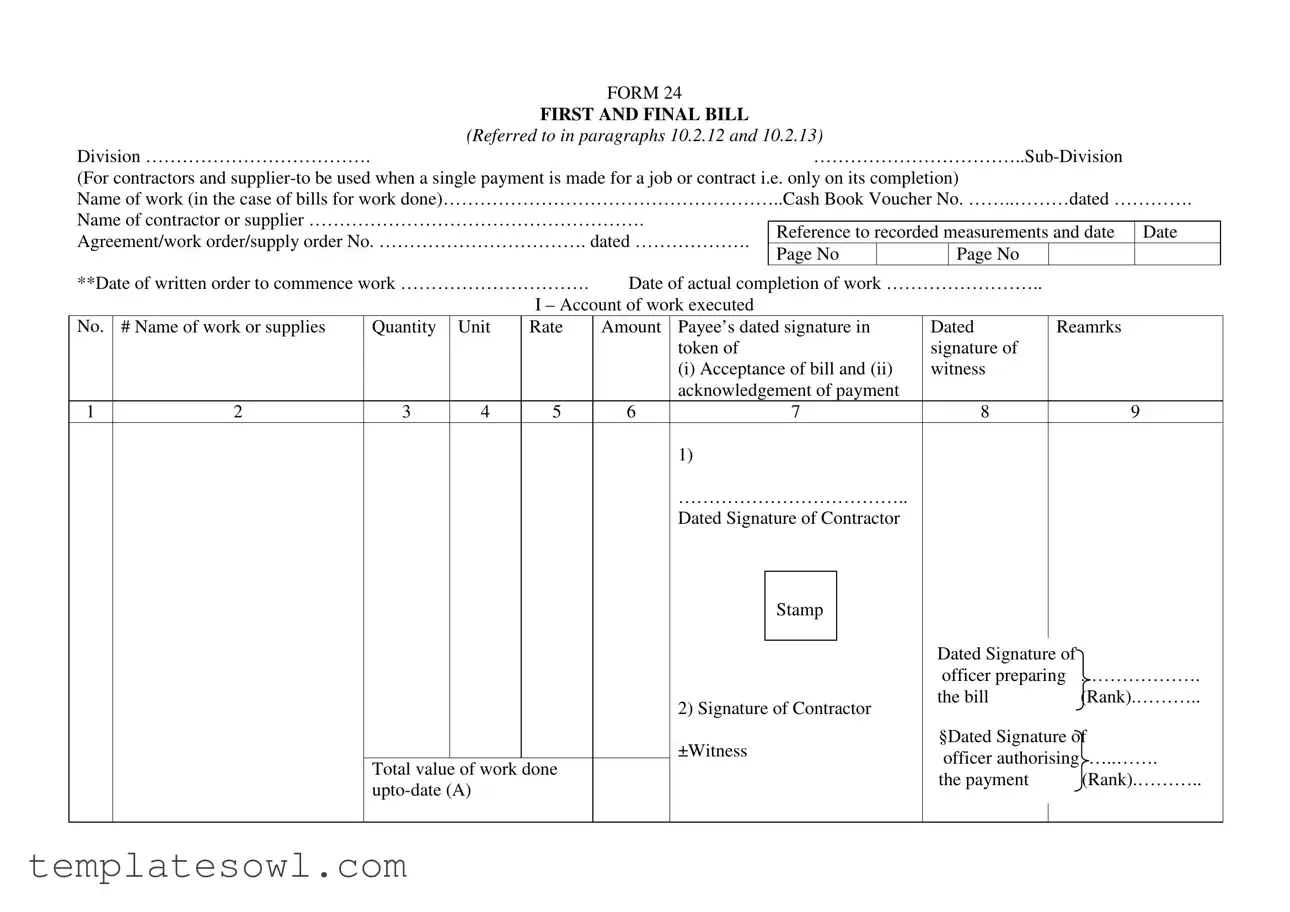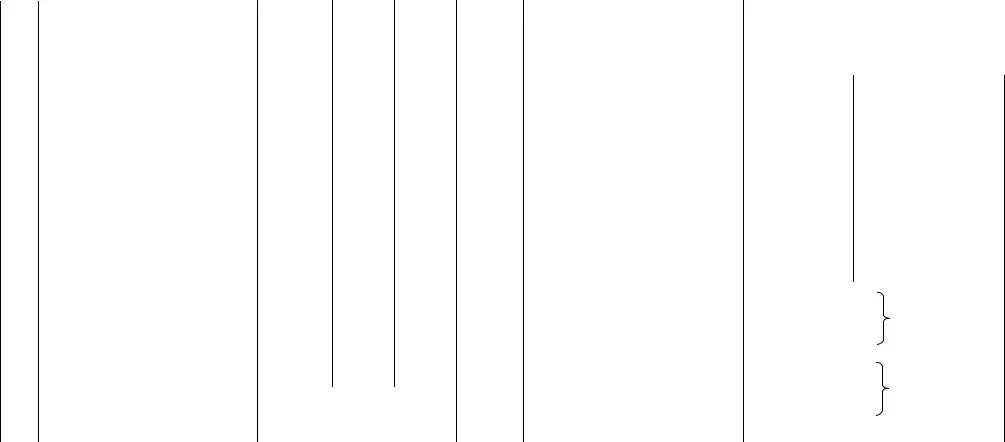What is the purpose of the Final Bill form?
The Final Bill form is used to document the completion of work done by a contractor or supplier. This form is specifically designed for situations where a single payment is made upon the completion of a job or contract. It serves as an official record of the work completed and the payment authorized for that work.
Who should use the Final Bill form?
This form should be utilized by contractors or suppliers who are completing a project or providing goods and services that require a final payment. It is intended for use in scenarios where all work has been satisfactorily finished, and all relevant agreements have been fulfilled.
What information needs to be included in the Final Bill form?
Several details should be filled out on the form. This includes the name of the work performed, cash book voucher number, agreement or work order number, recorded measurements, completion dates, the account of work executed with quantities, rates, and amounts, as well as signatures from contractors and relevant officers. Each section collects important data to ensure transparency and accuracy in the billing process.
Is there a specific date when the Final Bill should be submitted?
While there is no fixed submission date for the Final Bill form, it is typically submitted immediately after the completion of the work. The fine details, such as the date of actual completion, should be accurately filled out on the form. Timeliness is essential to ensure payment is processed as soon as possible.
What is the significance of the signatures required on the Final Bill?
Signatures on the Final Bill are crucial for authenticating the document. They indicate acceptance of the bill by the contractor and acknowledgment of payment by a witness. Having these signatures helps in preventing disputes and ensures that all parties involved agree on the work completed and the payment due.
Are there any payment methods specified in the Final Bill form?
Yes, the form allows for payments to be made by cheque or through recoveries of amounts credited to the work. Different methods for transaction processing can be used, but all payment details must be clearly documented within the form for accurate financial records.
What happens if there are discrepancies in the amounts listed on the Final Bill?
If discrepancies arise, they should be addressed before the submission of the Final Bill form. The total value of work done and the various payments must reconcile. It's encouraged to verify all figures and make adjustments as necessary before finalizing the bill to prevent any complications during the payment authorization process.
Is there a requirement for a witness to sign the Final Bill?
A witness is needed if the payee provides acknowledgment through a mark, seal, or thumb impression. In such cases, having a known person sign as a witness helps to validate the transaction and provides additional assurance that the payment process is legitimate and transparent.
What should be done after completing the Final Bill form?
Once the Final Bill form is completed, it should be submitted to the appropriate officer for authorization and payment processing. It is important for all involved parties to retain copies of the bill for their records to ensure proper documentation of the financial transaction.


